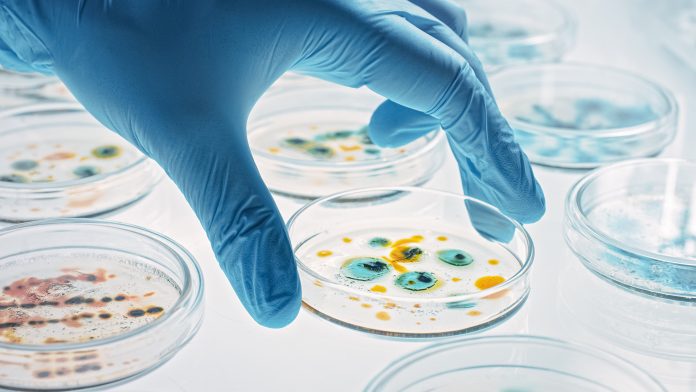
University of Oxford’s Professor Timothy Walsh reflects on the lack of immediacy and accountability in the fight against antimicrobial resistance (AMR) and why bolder action across policy and healthcare is urgently needed.
Outside of healthcare, and certainly, in the Western world, antimicrobial resistance may not be something the general population would consider an immediate threat. The gaze on AMR was undoubtedly averted with the onset of the COVID-19 pandemic, and while the immediacy of this health threat forced governments to shore up efforts on a global scale, collectively, progress in AMR innovation and awareness has been decidedly slow. The lack of incentives for pharma companies to develop new drugs coupled with a continuing misuse and overuse of antibiotics has made the frightening prediction of 10 million AMR-associated deaths a year by 2050 seem increasingly possible.
Timothy Walsh is a professor of medical microbiology, microbiologist to the Fleming Fund expert advisory panel and director of the BARNARDS project (Burden of Antibiotic Resistance in Neonates from Developing Societies). Having seen first-hand how easily AMR can spread without the suitable healthcare infrastructures in place to mitigate it, he speaks to HEQ about the national disparities in antibiotic use and education and why bolder action is needed if we are to tackle this impending global pandemic.
Can you give some examples of how antibiotics are being misused and overused?
There is always a conundrum of having antibiotics that are accessible and affordable where they are needed because often that is not the case. In lower and middle-income countries, and especially in rural areas, there are very high rates of mortality because antibiotics are not being used appropriately. Sectors including agriculture are using these medications indiscriminately, even for crops, with little thought for the impact this has on the bacterial population, and how that drives resistance.
The EU has implemented regulations in farming to address the misuse of antibiotics, but clear governance is still lacking. The World Health Organization (WHO), Food and Agriculture Organization (FAO) and World Organisation for Animal Health (OIE) will pertain to have some sort of influence and governs over how antibiotics are used in food production, but often, they can only advise. We have very clear examples where antibiotic use has been royally abused. For example, colistin was being widely used on farms in Africa and yet, for very serious infections where we have no other antibiotics to treat with, colistin will be used. It is absolutely insane that we still have those practices.

How do countries differ in their approach to antibiotic use?
As you would expect, the Western world is much more equipped in terms of infection control and antibiotic use because we have decent sanitation infrastructures, education, and can bring our children up with a reasonable level of hygiene awareness. However, these things are completely off the radar in low-income countries. It is all very well for us to have this somewhat high and mighty ethos around good hygiene practices and how we might want to impose those on others, but actually, until we start looking at the real drivers of AMR in low-income countries and why sanitation is such an issue – which is absolutely related to AMR in the community – that narrative is not going to have the traction that we want.
Having a public health support system is essential so that the clinician understands the therapeutic window they can work with following the report given from the lab. The problem that we have, and something fundamental to many low-income countries, is the laboratory infrastructure and link between lab and clinic simply does not exist. I was recently in Bangladesh where all antibiotics are given on clinical presentation so for instance, if a new-born baby is presenting with sepsis, or the antibody regimes are given on the clinical presentation, there is no microbiology to ascertain what bug is causing the sepsis and how resistant or sensitive that bacteria might be. Within these institutions, there is a high rate of nosocomial outbreaks of very resistant bacteria and therefore the mortality rate associated with that is very high.
What impact has the COVID-19 pandemic had on AMR?
We are currently undertaking a huge international study looking at the impact of antibiotic use for sepsis during the COVID-19 pandemic and whether that has increased antibiotic resistance. When we talk about COVID, we have to be slightly mindful of the specific period we are referring to; when COVID struck in March 2020, we did not know how to manage patients, and mortality was at a very high level with more than 1,000 patients dying a day. Because we did not know the best way to manage patients and the antibiotics to prescribe, drugs were used very indiscriminately. When that first wave went away during the summer months this enabled us to take stock and reflect on what we had learned so far. Guidelines then came into force to help us clarify what would and would not work, we then started looking at immunoregulators, and general patient management and had a better understanding of the most appropriate antibiotics to give.
The use of sanitising alcohol-based hand rubs in hospitals dramatically increased and helped to stem the transmission of bacteria from one patient to another, nosocomial infections certainly went down in intensive care units and high dependency units. However, I am not sure the impact has been the same in the community. Similarly, because it has become more difficult for people to see their local GP, I suspect online sales of antibiotics have gone through the roof. Certainly, in those countries where you have this online system set up and running, what we are seeing is people bypassing the GP and actually going for things like oral ciprofloxacin, or amoxiclav.
What is behind the lack of antibiotic innovation and how can companies be incentivised to create new drugs?
If companies reach phase two clinical trials, they will look at the marketplace and realise, actually, the market is not ready to support that particular innovation, because there is no revenue. Equally, the vast majority of these companies are located either on the east coast of the US, or in places like Switzerland, where the AMR issue is not heavily felt. If you are making an antibiotic in Boston to give to a population in Islamabad, this is not affordable. Cefiderocol for example can cost in the region of $1,000 for one week of dosage, it is virtually six months’ wages or more for the average person in South Asia. We need schemes in place to support the cost of those drugs.
One area we are focusing on at the Ineos Oxford Institute is novel compounds that are specifically designed for use in animals. For too long we have been using antibiotics like colistin and tigecycline to treat both humans and animals and this has driven AMR, we need to ask whether it is really necessary to use those drugs and if it is not, can we use other compounds designed for animal-specific therapies instead. In terms of production, this has to be a cheap alternative and therefore something that needs sponsorship or funding from large organisations like the FAO.
Whatever we do in terms of interventions, we need to be a lot braver and more creative than what we have hitherto been. We need far greater international accountability and some sort of global or international legislation to support these interventions.
We are seeing various initiatives, government-led programmes, and funding for new drugs, are we heading in the right direction? Do you feel confident that a global AMR pandemic can be averted?
Antibiotics are there to save lives, that is the bottom line. They save lives or improve people’s well-being to the point where they become functional again. Data collection is therefore really important when looking at resistance because we have to understand when a patient is admitted to a particular hospital or a particular ward – depending on their medical history, travel, and so on – the likelihood that the resistance in that bacteria is going to be higher than if they had not travelled for example.
If we are serious about aligning our activities with the Sustainable Development Goals (SDGs), particularly in low-income countries, dealing with antimicrobial resistance has to be part of that strategy because a lot of the SDGs are affected by antibiotic resistance. We cannot fix everything overnight, but one thing we can do is to try and provide some sort of support laboratories and collect data and then make that data relevant and accessible to representatives working in veterinary, environmental and human health; we need to get these people talking to each other.
I sit as an advisor on the Fleming Fund which supports 24 countries with laboratory infrastructure and health surveillance. The whole idea is to have conversations with these countries to help make labs operational, but unless you get a clear taxation system in that country that is accountable, you are a kite in a hurricane; you have no idea how to plan or make any forecasts for what you can and cannot do.
We cannot be an island in the fight against AMR because what happens in other countries like South Asia, Africa and South America comes to our door. While large organisations like the WHO can recommend, unfortunately, they do not have the wherewithal or resources to instigate the needed changes. Antimicrobial resistance is a slow tsunami. You cannot see it nor appreciate its impact, particularly in the UK, but it is a thin line on the horizon, we all know we are going to get wet someday, but we do not know when that wave will arrive at our shores.
Professor Timothy Rutland Walsh
Professor of Medical Microbiology
University of Oxford
Director of the BARNARDS project ‘Burden of Antibiotic Resistance in Neonates from Developing Societies’
Lead microbiologist to the Fleming Fund expert
advisory panel
https://www.linkedin.com/in/timothy-walsh-a03bb51b9/?originalSubdomain=uk
This article is from issue 21 of Health Europa Quarterly. Click here to get your free subscription today.
























